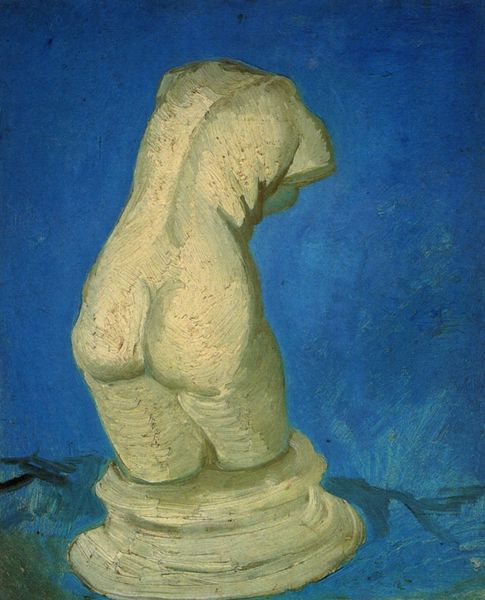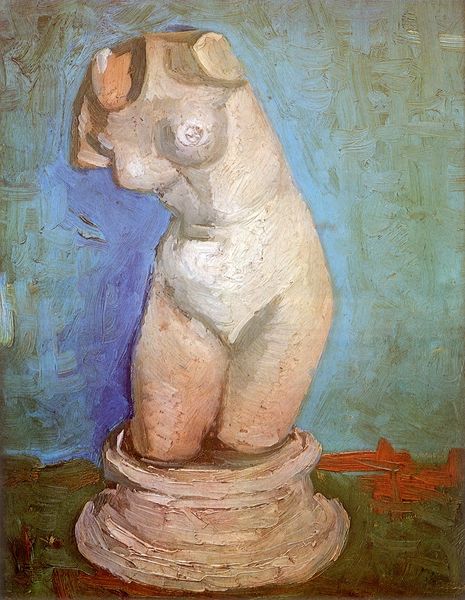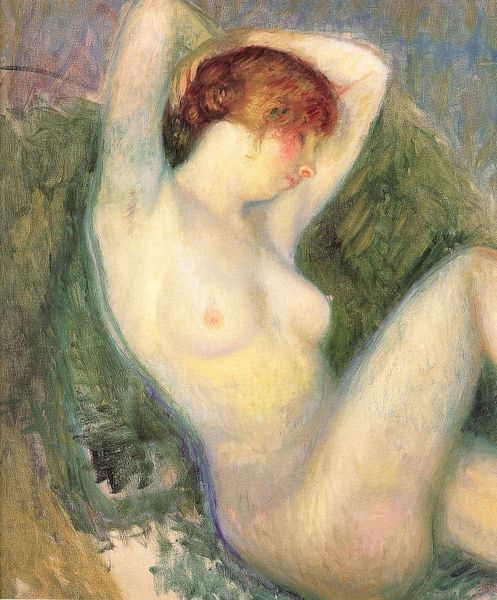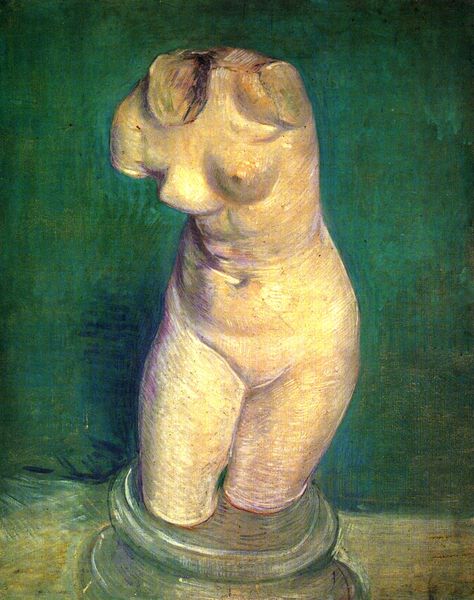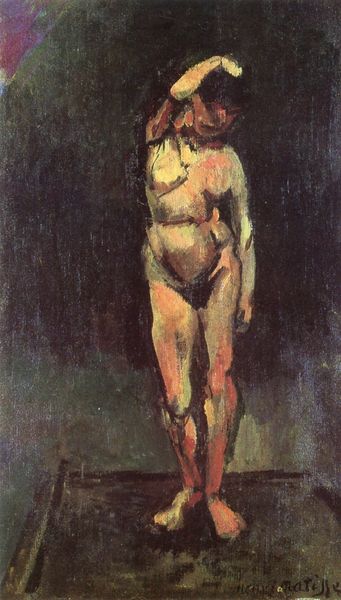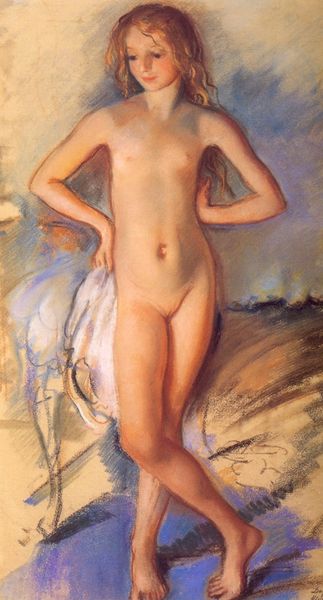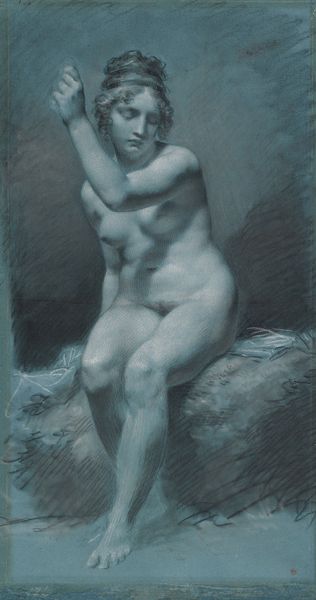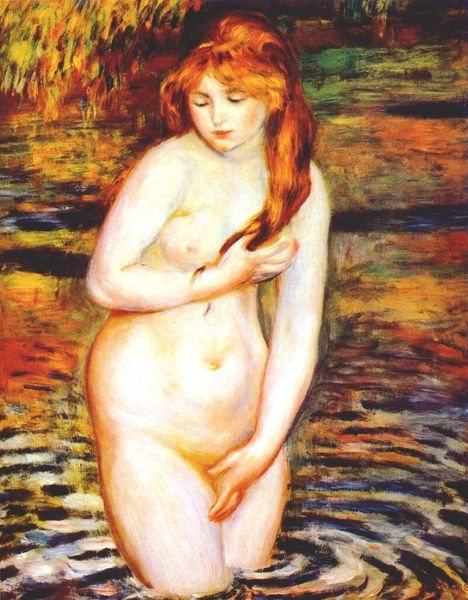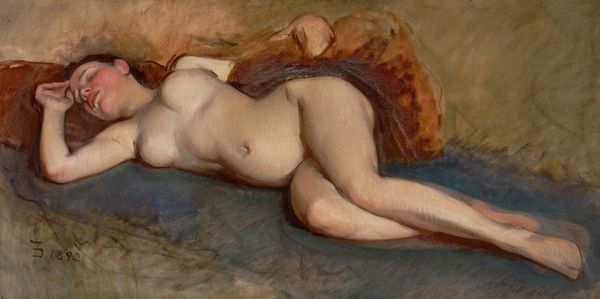
painting, oil-paint, impasto, sculpture
#
statue
#
painting
#
oil-paint
#
figuration
#
oil painting
#
impasto
#
sculpture
#
post-impressionism
#
expressionist
Copyright: Public domain
Editor: Here we have Van Gogh's "Plaster Statuette of a Female Torso," painted in 1886. It’s rendered in oil paint, and I find the blue hues contrasting with the stark whiteness of the figure quite striking. What do you see in this piece? Curator: Precisely. Note how the interplay between light and shadow, the arrangement of forms, establishes a powerful dynamism. The composition, a convergence of line and tone, presents a sophisticated dialogue. Van Gogh captures not merely the object, but an essence. Editor: I see what you mean about the dynamism, especially with the swirling brushstrokes around the static figure. But it seems a little unfinished compared to some of his later work. Is it a study, perhaps? Curator: In part, it is that: Van Gogh seeks to convey not the objective likeness, but rather a subjective rendering filtered through an intensely personal lens. Are the structural tensions, the formal balances achieved through color and form, not sufficient? Consider how he builds up the figure through impasto. Editor: The impasto does add a certain texture and weight. So, it’s the balance he’s trying to capture, rather than pure realism? Curator: Indeed. His focus lies within the formal vocabulary—structure, form, the tension between contrasting hues. The 'unfinished' quality becomes the medium through which affect is transmitted, rendering traditional notions of academic finish secondary. Editor: I guess I was expecting a story or symbolism. It's interesting to focus purely on the visual construction of the work. Curator: By directing your gaze to line, colour and texture—to the intrinsic materiality—the art piece speaks, quite literally, for itself. Editor: That’s given me a lot to think about regarding the essence of form and structure.
Comments
No comments
Be the first to comment and join the conversation on the ultimate creative platform.


